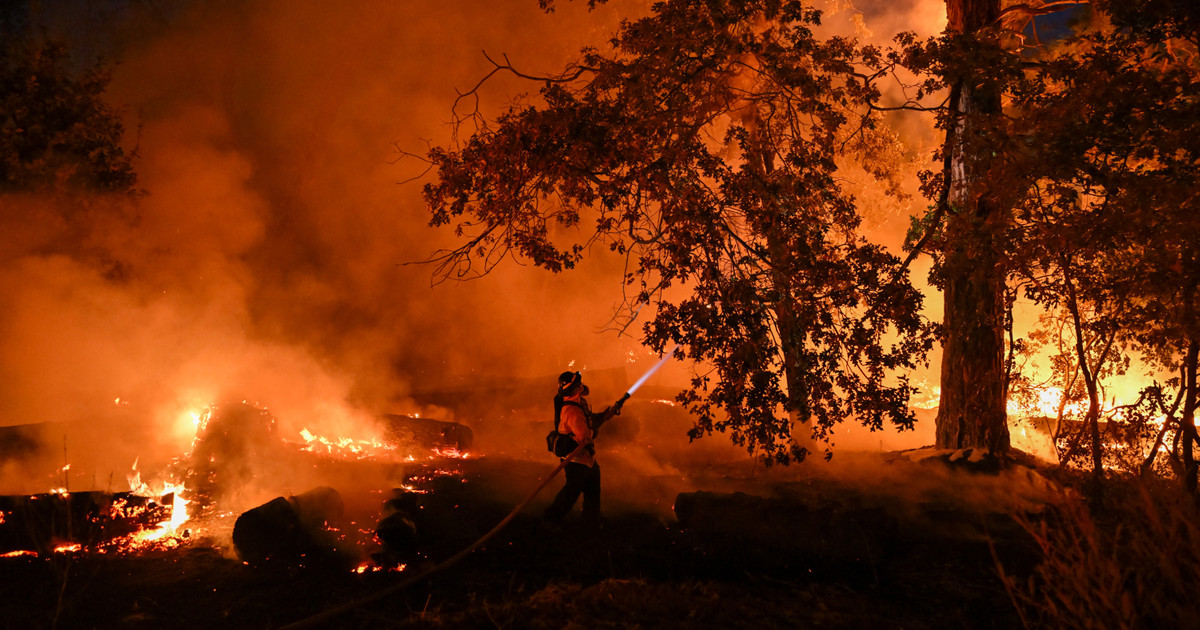On July 18, federal wildfire managers placed the nation under a designation known as Preparedness Level 5 — bureaucratic code for all hands on deck or, as one veteran wildland firefighter called it, “fire DEFCON.” In layman’s terms, Preparedness Level 5 means that the country’s wildland firefighting resources are spread thin, more blazes are imminent, and supervisors of local crews are reluctant to allow them to travel far from home to help elsewhere. This marks only the fourth time in the past two decades that the country has reached such a state so early in the calendar year. So far, more than 5 million acres have burned nationwide, tripling last year’s total, and there are still months to go in fire season.
Nine days after the country entered Preparedness Level 5, the U.S. Forest Service — the largest of the five federal agencies responsible for fighting wildfires, with more than 11,000 firefighters — said that it had reached 101% of its hiring goal for 2024. However, firefighters on the ground say that the agency is understating how badly depleted their ranks are.
Overall numbers are hard to obtain, but according to data provided by a dispatcher who works for the Bureau of Land Management, 2,417 nationwide requests for crucial fire resources — everything from radio operators to task force leaders — had gone unfilled through July 26. Those requests were delivered to all five federal agencies as well as to state and private organizations. What was especially alarming, the dispatcher said, was the lack of experienced firefighters: “It tells us we have critical shortages in certain particular middle- and upper-level operational qualifications.”
Eric Franta, who works at a Forest Service helicopter air base in Oregon, told me his unit was staffed at only 75%. (In a profession where fears of workplace retaliation are widespread, the only wildland firefighters willing to share their names are those that have roles with the National Federation of Federal Employees, the union representing wildland firefighters. Franta is a union steward.) Another Forest Service wildland firefighter in Oregon said, “We’re not able to fill any crews.” Firefighters in California are reporting similar issues. According to interagency data obtained by ProPublica, 90 of the approximately 270 Forest Service fire engines in the state were unavailable for service on Aug. 12. Engines may be unavailable for a variety of reasons, such as mechanical maintenance or crews on mandatory leave, but firefighters say this number is unusually high. On the same day, according to the data, at least a third of the statewide Hotshot crews — elite teams that fight large wilderness fires — were not staffed sufficiently to operate as intended.



If I were a big burly dude I’d be thinking about changing my career to firefighting right about now. The demand is only going to increase.
That only really works if there are funds to pay for it. These firefighters are making $15 (per the article) for doing hot, labor-intensive work in dangerous environment and conditions. It’s hard to get recruitment numbers up for work like that without good pay. Bonuses can help, but it doesn’t sound like they are paying enough to attract the labor they need.
The article also says retention is hard and one of their biggest problems is the lack of ‘experienced’ firefighters. It’s definitely going to be tough to keep people coming back at pay rates that are less than what minimum wage would be if it had kept up with inflation.